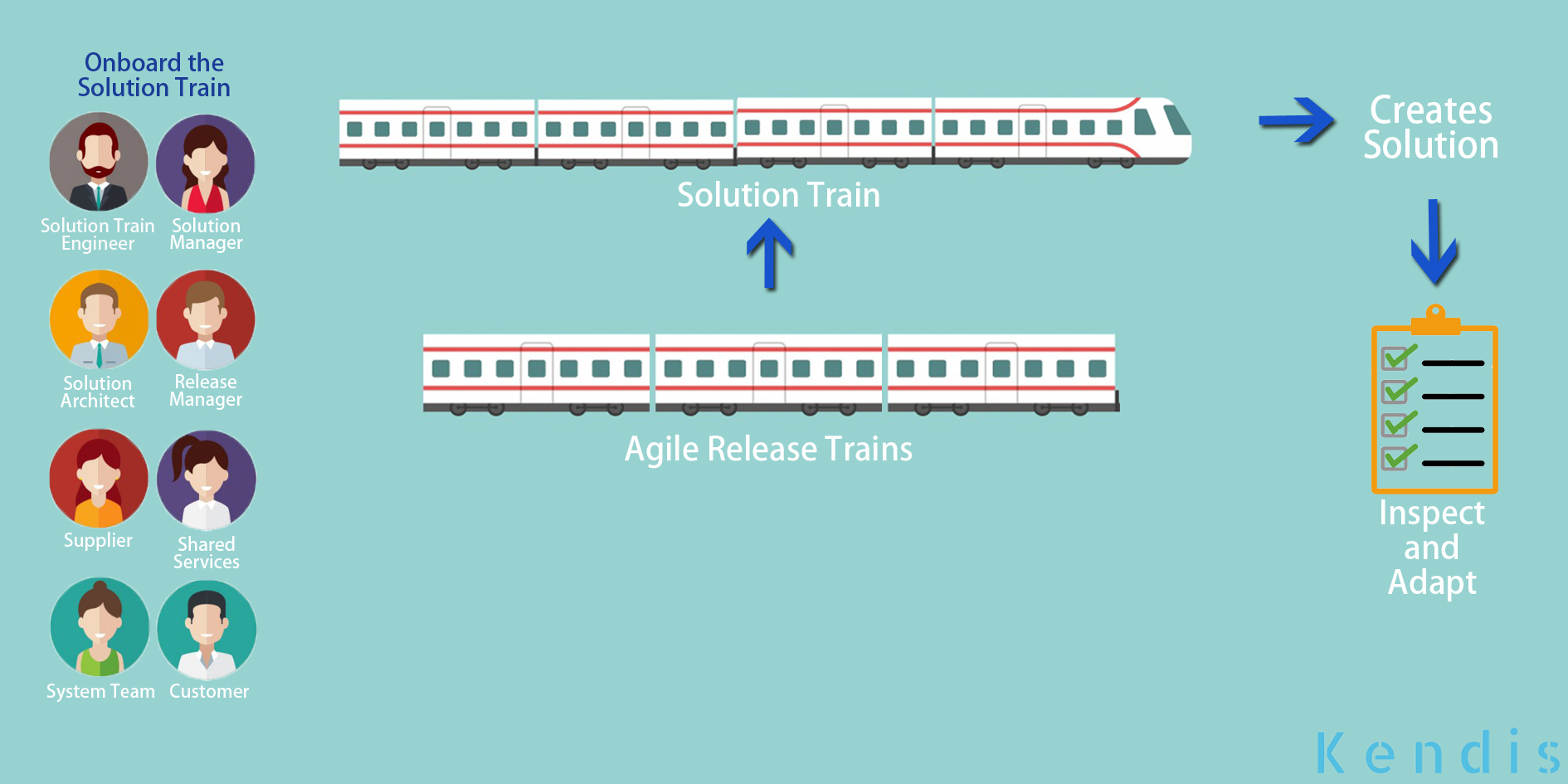Solution train builds complex solution with a Lean-Agile approach. It organizes and coordinates multiple Agile Release Trains into one. It guides the focus of hundreds or even thousands of individuals towards achieving a common mission. This is planned for creating solutions on a large scale. Solution trains are widely used for the development of medical devices, automobiles, aircraft or banking systems.
HOW IS THE SOLUTION TRAIN PLANNED?
A solution train starts like a conventional SAFe Program Increment Planning session. But instead of having Agile Teams that become a part of the Agile Release Train, there are Agile Release Trains that participate. The vision and the backlog are aligned. The dates are decided for the cadence and the schedule to follow. The planning of the budget is done according to an Economic Framework. This framework consists of lean budgets, epic funding, decentralized planning and job sequencing. The Economic Framework effectively arranges the team to complete its business objectives by considering the business constraints and staying within the set budget.
There are regulatory standards that the solution has to comply with. These standards are concerned with building high quality solutions with Lean and Agile practices. The Solution Kanban helps in managing the epics and limits the WIP (Work In Process). The capabilities are analyzed and become part of the Solution Backlog from where features are then implemented. Finally, all the Agile Release Trains are coordinated to form the solution train.
Model-Based Systems Engineering is a technique that provides flexibility in defining the solution. It describes how the design of the solution can be developed, documented and maintained. Every solution has an intent and context. The intent depicts the behavior of the solution whereas the context describes how the solution fits in the deployment environment.
The delivery of the solution is independent of the cadence. Partial or the whole of the solution can be delivered in an iteration anytime.
END OF THE INCREMENT
At the end of every iteration, there is a solution demo. It is a demonstration of what has been done to get feedback from the stakeholders or product owners. It is used to evaluate the integrated solution that has been created by the Agile Release Trains in the Solution Train. After every solution demo, there is an Inspect and Adapt session. Problems are identified and are used to improve in the next iteration.
ROLES IN THE SOLUTION TRAIN
There are roles and additional help that support the delivery of value to the customer.
- Solution Train Engineer monitors the solution Kanban. They ensure the smooth functioning of the train and coordinate the delivery of the solution with the Release Train Engineers.
- Solution Management conveys the customer’s needs to the Agile Release Trains. With the help of the product management, the Strategic themes are used to define capabilities and split into features.
- Solution Architect defines the technological design that connects the solution across all the Agile Release Trains.
- Release Management governs the Solution Train. They have the authority to approve releases. They regularly evaluate content, progress and the scope of the solution. It is constituted of representatives from the solution train, agile release trains, marketing team, quality assurance team, Lean Project Management, operations, deployment and distribution.
- System team addresses the consistent integration of the system across the Agile Release Trains.
- A supplier is an external or internal organization that helps the solution train in the delivery of the solution. They help in providing subsystems or components. Assurance to be delivered in the shortest amount of time to the customer is of dire importance. A supplier works in the same cadence as the Agile Release Train and participates in the PI Planning.
- The customer is the owner of the final solution. They are part of the value stream and work with the solution and product management.
- Shared Services are required whenever their help is needed. They are not full time members of the Agile Release Train. Shared services include data security, information architects and database administrators.

Challenges of a Solution Train
Complex solutions often need appropriate vision, thorough analysis, design, architecture, execution and most importantly “Single place for tracking their progress”. According to our recent study, Solution Train Engineers are facing these challenges.
- Not a single simplified view to answer stakeholder queries about solution progress and risks.
- Due to complexity, Solution Team is unable to recognize a problem as soon as it arises.
- Delay in delivery of a Solution due to lack of visibility among the deliveries from the Agile Release Trains.
At Kendis, we are tirelessly working to assist enterprises in solving Solution Train level problems. For further details, and to share your challenges, contact us [email protected]
Advantages of Solution Train
The development of complex solutions is structured with Solution train. Some of the key advantages are listed below.
- Aligns multiple agile release trains and brings them on to one page by adjusting their focus on to one common vision.
- Cadence and synchronization help in aligning the objectives and setting the routine for the Agile Release Trains to follow.
- Adaptable to changing requirements even when a large solution is being built.
- Involving and valuing customer input.